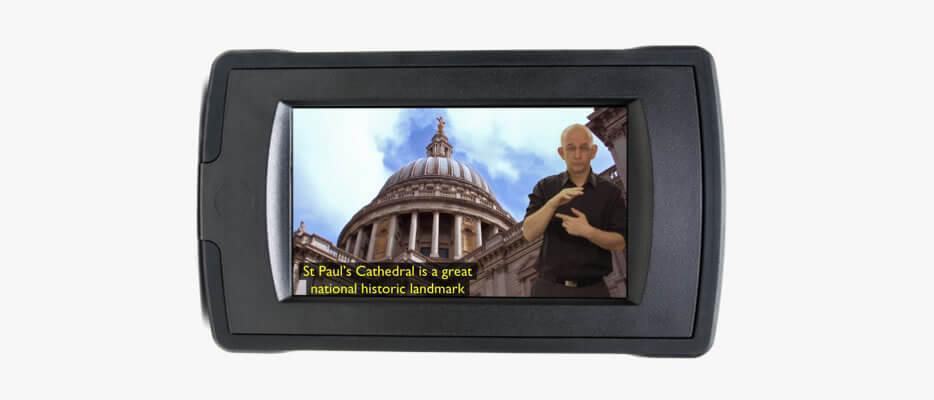
15th March 2019
How easy is it for disabled people to try somewhere new in 2019?
For many, a day out at a museum, gallery or visit to a tourist attraction is an exciting time. However, for some visitors with a disability the thought can be very daunting – and often the challenges start way before getting to the premises.
This year, Disabled Access Day 2019 is being held on 16th March. The day is designed to encourage disabled explorers using the hashtag #YouAndSomewhereNew and visit a museum, venue or attraction. It is an opportunity for accessibility to be discussed in a visitor experience context and for organisations to showcase how they look after their disabled visitors.
To celebrate Disabled Access Day this year, we had a chat with our friends at VocalEyes, where our team work closely with their expert audio describers to develop the Audio Described Guides for museum and heritage clients. We asked Matthew Cock, Chief Executive, some questions about the progress of accessibility and some tips for museums and the cultural sector.
Matthew, what has been the most positive improvement in accessibility that you have noticed?
In recent years there’s been a widening of understanding in the museum sector that disabled access is more than ramps and lifts and disabled toilets: witness the increase in awareness of the barriers experienced by autistic visitors, people with dementia and people who have sight or hearing loss. This change is also part of the wider awareness in the sector that ‘museums are not neutral’ and regularly exclude people through design. There are many initiatives and individuals determined to change the sector – and this is incredibly positive.
What is the most common mistake that museums make in their accessibility strategy?
The most common reason that museums fail in their accessibility strategy is internal communication, awareness, and maintaining both over the long-term. The museum might develop an amazing and useful access resource, but if it isn’t promoted, staff at the front desk don’t know about it and fail to offer it to members of the public, then it may as well not exist. It may be that the resource– such as a braille guide – is only rarely used, and it’s easy for staff to forget about it: but for that individual visitor has been failed. Access strategies that work are generally when all staff are involved, across departments and right up to the Director or Chief Executive. It needs to be based on the organisation’s core values – and thus can’t be ‘forgotten’.
In your opinion, what is the biggest challenge facing museums in terms of accessibility?
The biggest challenge is for museums to start designing exhibitions, displays and buildings with inclusion in mind from the start – rather than leaving access as an after-thought or add-on at the end. This would be a paradigm shift for most museums, but there is a strong argument that all visitors would benefit if this approach were taken.
What three tips could you advise museums to implement today to improve their visitor experience for visually impaired / blind people?
- Talk to blind and partially sighted people about their experience of your museum
- Book visual awareness and guiding training for front of house staff
- Develop Large Print guides for galleries and exhibitions, and publicise this through your website (using the State of Museum Access 2018 as a guide)
As Matthew highlights, an inclusive design approach at the outset of projects is what is required – not a bolt on after the project has been delivered. The wonderful thing about inclusive design, is that it benefits everyone. Inclusive design reaches beyond the physical challenges to intellectual and sensory needs of all audiences.
“Inclusive design aims to remove the barriers that create undue effort and separation. It enables everyone to participate equally, confidently and independently in everyday activities.”
ATS specialise in engaging wide ranges of audiences by breaking down access barriers through design of inclusive multimedia and audio guides, often including British Sign Language, Audio Described and Virtual Tours. If your organisation is interested in finding out more or would like to host a workshop to explore accessibility and the tools available to attract and engage disabled visitors – please get in touch.

British Sign Language (BSL) Multimedia Tours from ATS, available a many heritage sites and attractions
For all the explorers who are out and about and looking to experience British Sign Language or Audio Described tours, please review the list below:
Audio Described Tours:
Colchester Castle, The D-Day Story, Portsmouth.
Audio Described Tours and British Sign Language:
Westminster Abbey, Buckingham Palace, St Paul’s Cathedral, The Royal Mews, Eltham Palace, Apsley House, Walmer Castle.
British Sign Language:
National Portrait Gallery, Bletchley Park

